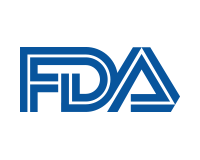United States Department of Health and Human Services

United States Food and Drug Administration: Publications
Date of this Version
1962
Document Type
Article
Citation
U. S. DEPARTMENT OF HEALTH, EDUCATION, AND WELFARE Public Health Service Communicable Disease Center Atlanta 22, Georgia; Public Health Service Publication No. 895; * U.S. GOVERNMENT PRINTING OFFICE . 1962 0- 624794
Abstract
Swine brucellosis is caused by Brucella suis, a strain of bacteria which also cau ses human brucellosis, or undulant fever. T his disease is an imp 0 r tan t public health problem which affects thousands of farmers, livestock handlers, meat processors, and butchers .. The U. S. Department of Agriculture estimates that 6.15 percent of the 1.8 million swine herds in the Nation are infected with brucellosis. This represents about 131,000 in f e c ted herds on farms, where some 579,000 farm people come into daily c ontact with these herds. The infection rate among these rural persons varies considerably in different areas. The highest incidence of human brucellosis of swine origin is found in the major pork producing regions. In some areas the infection rate among hog producers is estimated to be as high as 20 percent. Brucellosis is also a health problem among livestock handlers who move swine and other animals from the farm to shipping points and to processors. The disease problem among persons processing pork has been of serious concern to public health authorities in the Midwest and Southeastern United States. The highest incidence of human infection has been found in those plants handling only swine. Veterinary and lay meat inspectors are other groups in which infection is frequently seen. The incidence of brucellosis among veterinarians has always been higher than in any other group. Attack rates in the past have exceeded 950 per 100,000 among rural practitioners (5).
Included in
Dietetics and Clinical Nutrition Commons, Health and Medical Administration Commons, Health Services Administration Commons, Pharmaceutical Preparations Commons, Pharmacy Administration, Policy and Regulation Commons


Comments
US govt work